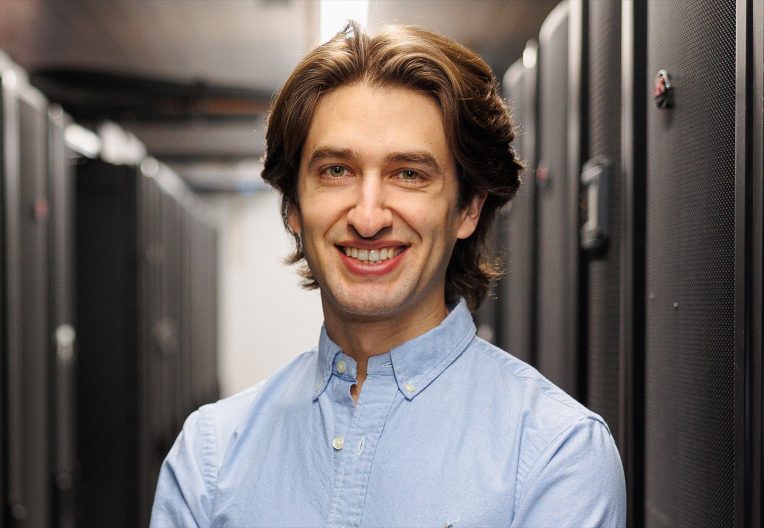An Illinois State University theoretical physicist is a leading member of a new, international collaboration studying neutron stars and black holes.
Dr. Matt Caplan, an assistant professor of physics, is part of the Simons Collaboration on Extreme Electrodynamics of Compact Sources (SCEECS), a group of theoretical physicists across the U.S., Canada, and Israel, supported by the Simons Foundation.
Over the next four years, SCEECS members will conduct large scale simulations using state-of-the-art tools to better understand the electrodynamics around neutron stars and black holes.
“These are the most extreme objects in the universe, and they are simply too complicated for any one person, but together we stand a chance to crack some of the big questions in astrophysics,” said Caplan. SCEECS brings together researchers with diverse expertise in plasma physics, magnetohydrodynamics (the study of the dynamics of electrically conducting fluids), particle physics, general relativity, and supercomputing. “I’m very fortunate to have this chance to work so closely with some of the best physicists in the world,” said Caplan.
As part of a $600,000 grant through SCEECS, Caplan and his students at Illinois State will collaborate with researchers from Caltech and Columbia University, among others, to do simulations of the outer layers of neutron stars. “This part of the star, its crust, is literally a crystalline solid due to the enormous pressure from the star’s gravity and reaches densities trillions of times greater than any matter on earth,” said Caplan. “Understanding how it can break and how the magnetic field influences the behavior of the crust is one of the most important but poorly understood pieces of the puzzle.”
Caplan will also play a leading role in SCEECS’s outreach and public communication work. As an expert science communicator, he has contributed to several educational YouTube channels, including Kurzgesagt and PBS Space Time, and the BBC docuseries Our Universe on Netflix.
“We’re going to lean heavily on a lot of these existing collaborations to tell the public about discoveries in new ways,” said Caplan. “What’s the point of doing all this really cool science if you’re not going to tell anybody?”
Caplan’s involvement in SCEECS is the latest chapter in his research which uses large scale computer simulations to study the interiors of neutron stars. He is also a recent recipient of a Cottrell Scholar Award to support his research on nuclear astrophysics and nuclear weapons policy.

